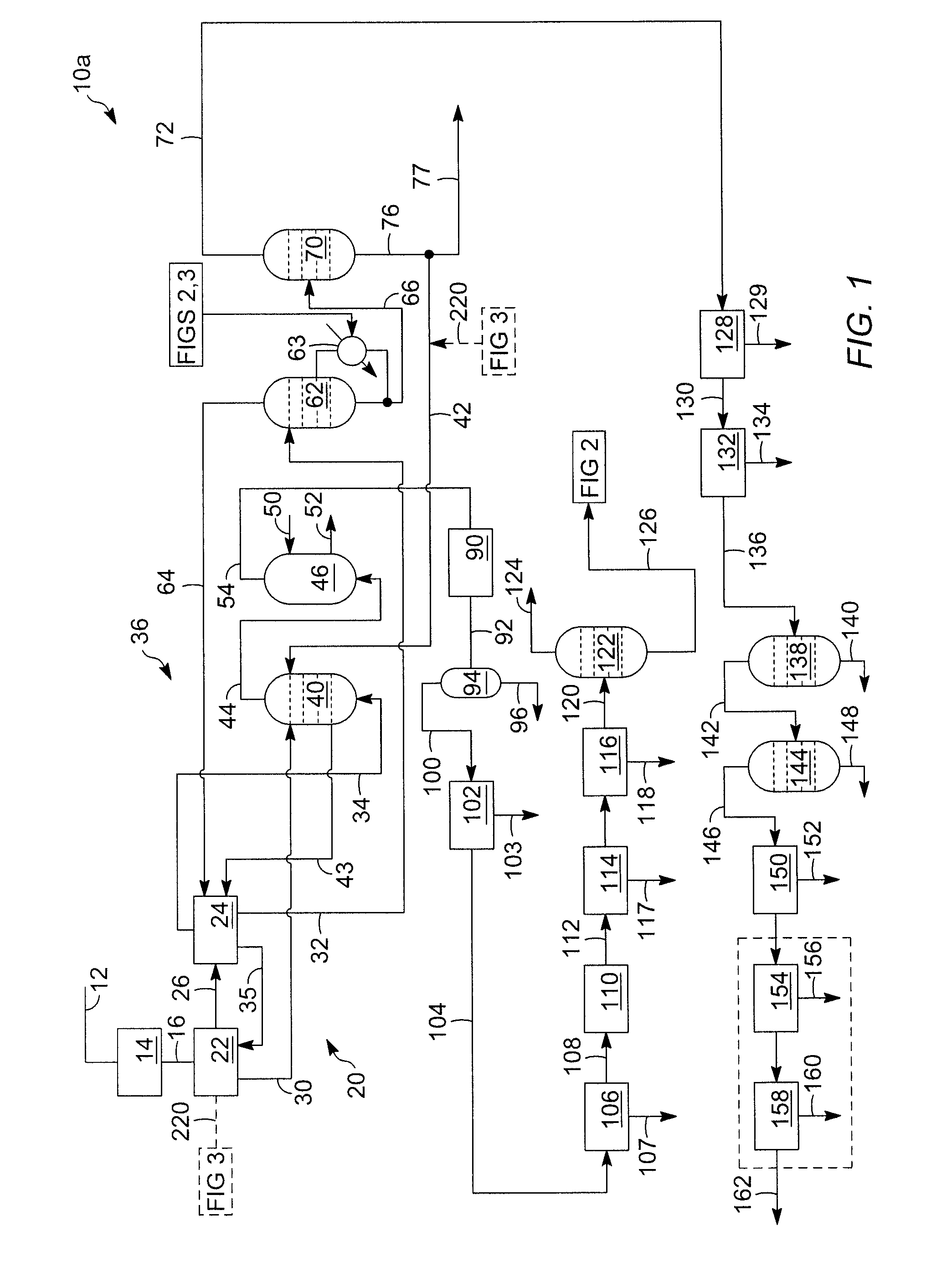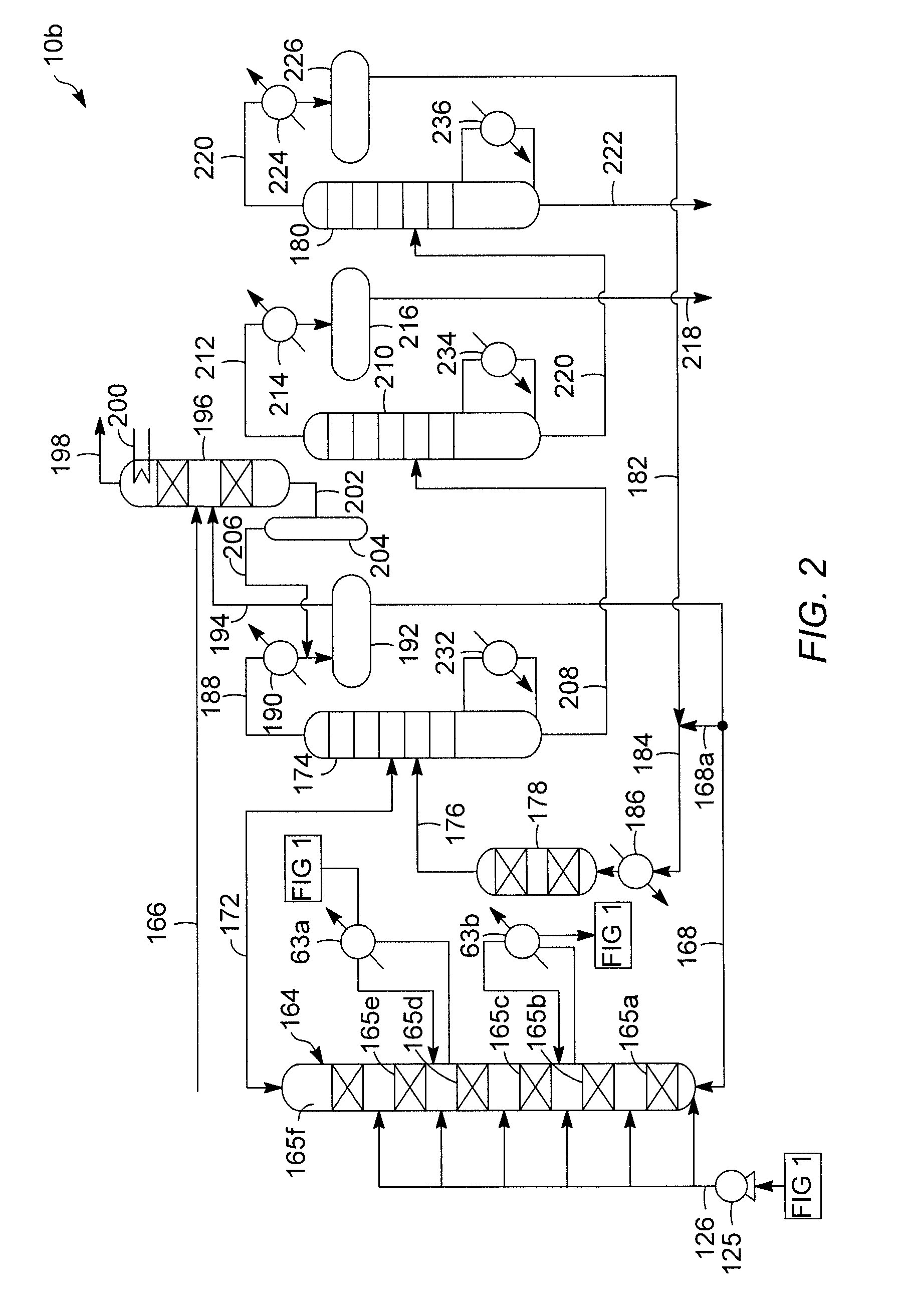Integrated Production of FCC-Produced C2 and Ethyl Benzene
a technology of ethyl benzene and c2 is applied in the field of hydrocarbon processing, which can solve the problems of high construction and maintenance costs, high energy consumption of such a splitter, so as to reduce the amount of recycle, reduce the cooling duty of the intercooler, and avoid the effect of cracking reaction
- Summary
- Abstract
- Description
- Claims
- Application Information
AI Technical Summary
Benefits of technology
Problems solved by technology
Method used
Image
Examples
Embodiment Construction
[0024]FIG. 1 schematically illustrates a system 10a for catalytic cracking a heavy hydrocarbon feedstock and obtaining light olefins via absorption-based product recovery and FIGS. 2 and 3 schematically illustrate systems 10b, 10c for efficiently converting the light olefins from the system 10a into one or more useful intermediates. Those skilled in the art and guided by the teachings herein provided will recognize and appreciate that the illustrated systems 10a, 10b, 10c have been simplified by eliminating some usual or customary pieces of process equipment including some heat exchangers, process control systems, pumps, fractionation systems, and the like. It may also be discerned that the process flows depicted in FIGS. 1-3 may be modified in many aspects without departing from the basic overall concepts disclosed herein.
[0025]In the cracking system 10a, a suitable heavy hydrocarbon feedstock stream is introduced via a line 12 into a fluidized reactor zone 14 wherein the heavy hyd...
PUM
| Property | Measurement | Unit |
|---|---|---|
| Temperature | aaaaa | aaaaa |
| Fraction | aaaaa | aaaaa |
| Fraction | aaaaa | aaaaa |
Abstract
Description
Claims
Application Information
 Login to View More
Login to View More - R&D
- Intellectual Property
- Life Sciences
- Materials
- Tech Scout
- Unparalleled Data Quality
- Higher Quality Content
- 60% Fewer Hallucinations
Browse by: Latest US Patents, China's latest patents, Technical Efficacy Thesaurus, Application Domain, Technology Topic, Popular Technical Reports.
© 2025 PatSnap. All rights reserved.Legal|Privacy policy|Modern Slavery Act Transparency Statement|Sitemap|About US| Contact US: help@patsnap.com



